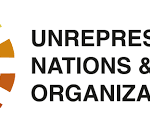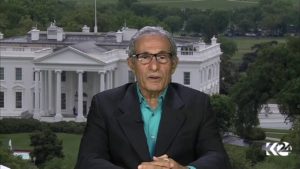By Abdul Rahman Al-Rashid
The US and French ambassadors visit to the rebel city of Hama that is rebelling against the al-Assad regime
represents an important chapter in the political drama unfolding in Syria. The government thought that this would be the perfect opportunity to plant a smoking gun in the protesters hands, and so allowed the two western diplomats to visit the city, opening the way for them to bypass the huge number of military checkpoints that have been set-up between Damascus and Hama.
Following this, Syrian state media announced that US Ambassador Robert Ford had travelled to Hama in order to give the protestors instructions and to supervise a conspiracy against the Syrian regime. However the protesters were not overly-concerned with such claims and for the first time greeted western diplomats with open arms and olive branches, rather than burning flags. They are aware that the Damascus regime fears international intervention, along the lines of NATO’s intervention in Libya, for this is something that would completely delegitimize the regime, with this legitimacy being transferred to the protesters. Any such intervention would certainly be stronger than the regime and its Shabiha thugs (pro-regime militia), and would be easily capable of breaking Bashar al-Assad’s grip on power. The story of the US and French ambassadors visit to Hama, and allegations of the protesters ties to the West soon became the focus of Syria’s propaganda strategy, with the objective of stigmatizing millions of Syrian protesters as agents of the west. However this strategy ultimately failed, and nobody within Syria or the Arab world was taken in by this. We did not see anyone burning western flags of images of western leaders, and so Syria’s attempt to utilize the US and the possibility of western intervention as a scarecrow did not bear fruit. Indeed this had the complete opposite affect, with Syrians and Arabs expressing disapproval of the west’s inaction and genuinely asking: why hasn’t the west intervened in Syria yet?
Prior to the events in Syria, we witnessed the Gaddafi regime’s attempts to convince the Libyan people and indeed the entire Arab world that they were facing a western “crusade” that was seeking to colonize Libya for oil. When this claim did not receive a favorable response, Gaddafi then came out to claim that the west was attempting to convert Libya’s Muslims to Christians! However this second claim also failed to convince anyone, indeed the Libyan people began to call on the NATO forces to increase the intensity of their attacks.
As for Yemeni President Ali Abdullah Saleh, who also found his regime under threat following the beginning of the “Arab Spring”, he previously made a speech claiming that this was a US conspiracy to remove him from power. Of course, nobody believed him, and the Yemeni opposition continued to meet with the US ambassador to Sanaa, within the framework of discussing a peaceful resolution to the crisis.
There are a number of natural fears embedded in the Middle Eastern mentality, such as Al Qaeda, Israel, and the West. However just because such scarecrows succeeded in frightening us in the past does not mean that they will succeed in inspiring fear or mobilizing public opinion today. Over the past 5 months, people have stood firm in the face of such scare tactics, claims of conspiracy, new world orders, and claims that Israel is seeking to occupy all of Palestine. Such claims have failed in rousing the sympathies of the Arab world.
What has happened? In the past it was enough to quote a US official statement in order to mobilize public opinion in the interests of the regime. Indeed some regimes have been able to live on a diet of inflammatory statements against Israel and claims of defending the homeland against western conspiracy. However since the beginning of the Arab Spring, the people are no longer interested in such rhetoric, this has become a broken record.
We must also stress that the West is not completely innocent, and it has been involved in one way or another [in the outbreak of the Arab Spring]. However it was not the mastermind behind these surprising events, but nobody can deny that it played a supporting role. The US administration publicly granted aid to youth activities and pro-democracy groups, providing them with political – and occasionally logistical – aid. For example, Washington provided the political opposition with means of breaking the government’s electronic and digital surveillance of their activities and communication. At the same time, we can safely rule out the claims that Washington was seeking to overthrow the Egyptian, or even Syrian, governments. For at most the US sought to change the behavior of these regimes, in line with its own interests, particularly as the US experience in Iraq clearly showed that local Middle Eastern culture is not yet ready for western-style democracy. However the coming days will reveal the true strength of democracy in post-revolutionary countries like Tunisia and Egypt.
As for scaring the people with threats of Israel and the West, this is a practice that no longer works. In Syria, for example the majority of protesters have suffered a long history of suppression, and they have risen up in a revolution against injustice, not in favor of any political trend of foreign country, such as the US or France. This revolution represents the majority of the Syrian people, whilst at the same time it is consistent with the West’s aspiration for the country, as they view the current Syrian regime as a regional stumbling-block. Therefore such scarecrows are no longer enough to scare the people, for they view change – whatever the future may hold – to be better than the status quo.
Syria: Why the US is no longer an effective scarecrow
You must be logged in to post a comment.
















+ There are no comments
Add yours